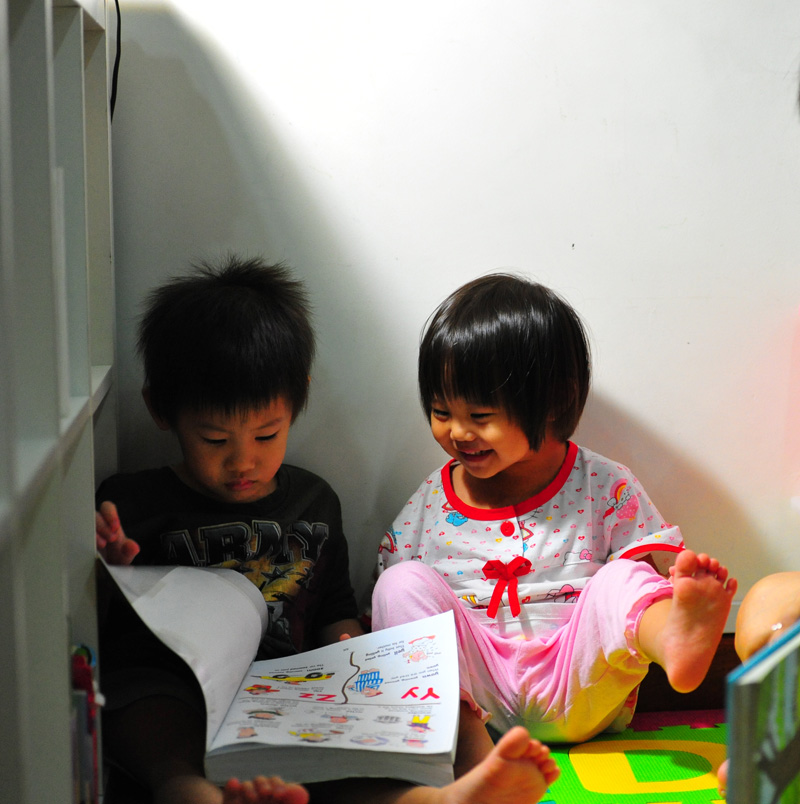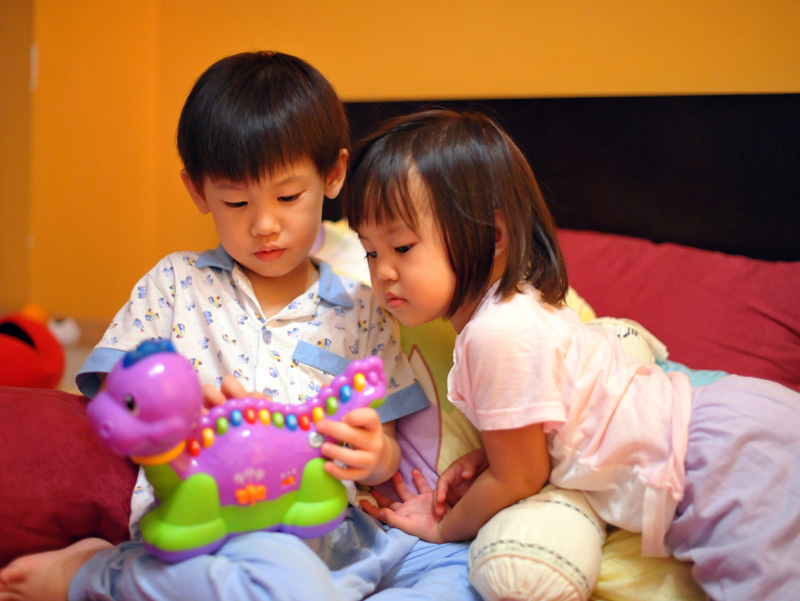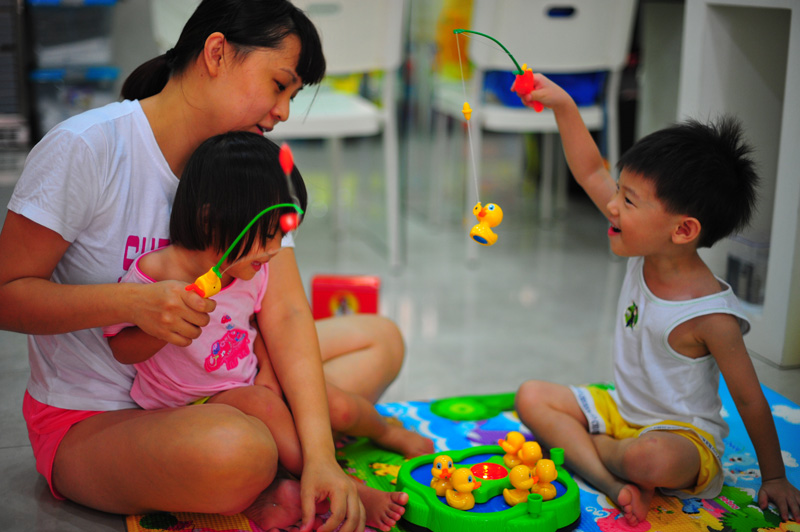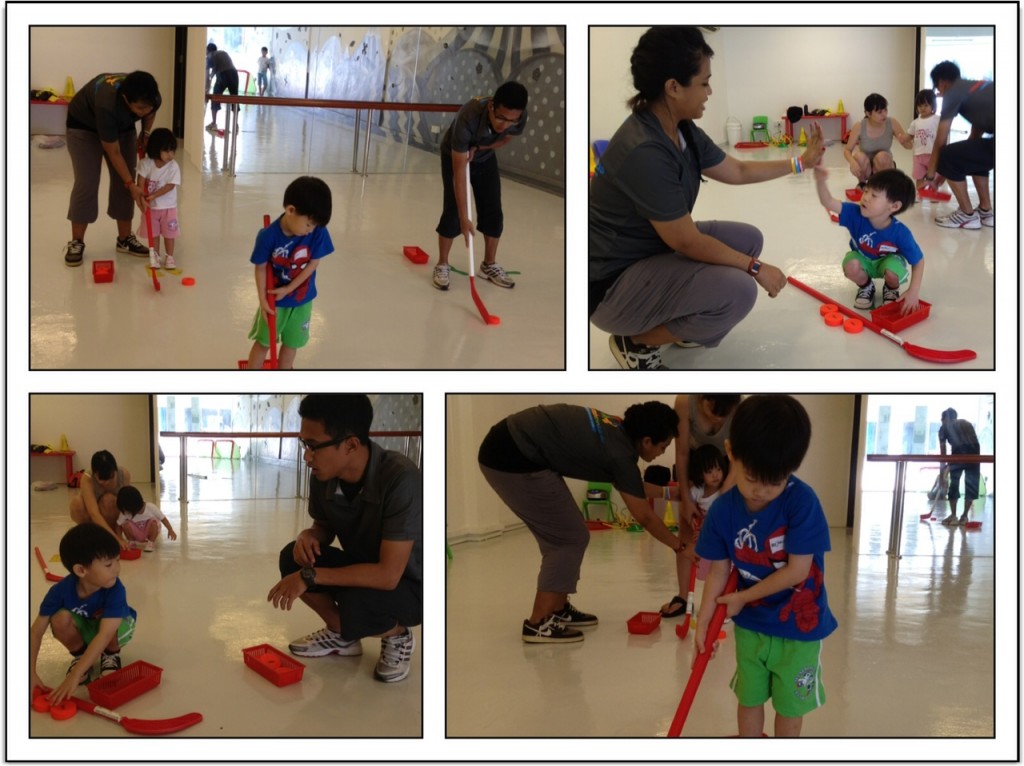When you have one kid that constantly needs to be engaged, one kid that is always engrossed and one kid that’s perpetually putting things in the mouth ranging from dirt to plastic bottle caps (and more recently fir leaves from our Christmas tree), you can forget about toilet training.
It’s time to toilet train the middle child but it’s been nothing more than a daunting feat.
Picture this: the girl’s at the stage where she’s fully aware of her need to go, finds the diaper cumbersome and wishes to do her business swiftly and confidently, just like her kor kor. She takes off her diaper (or refuses to wear it) and goes about the house, doing her own things. Mom occasionally remembers she has diapers off so she asks her for the first ten minutes of her diaper-off time, “Do you need to pass urine?” and reminds her to go to the toilet if she needs to. Then Mom goes about the house, doing the things she needs to do to keep everyone out of mischief, such as reading to the eldest brother, role-playing with no-diaper-little-miss herself, and stopping the baby from chewing the house down, which includes running up and down the hallway, into rooms, toilets and kitchen 459 times. Very soon, half an hour passes and everyone forgets that little-miss is not wearing her diaper, including little-miss herself.
Little-miss has so far peed on the playmats, the coffee table, while sitting on the sofa and halfway through pretend play, craft lessons and just walking around the house. After every “accident”, we’d remind her to go to the toilet when she needs to pee and she’d say “ok!”. Have I ever mentioned I have a daughter who plays with a great deal of abandonment?
It was much easier with Ben, partly because he’s the first kid and partly due to the fact that he’s a boy. Boys have it easy. Especially with the trainer urinal. All I needed to do was to put the urinal at an accesible height in the toilet and the novelty of pee-ing soon caught on. That boy just couldn’t wait to pass urine and watch what comes out. When he needed to poo, he’d would yell for an adult to fix the child toilet seat, sit there, entertain himself while doing his business, and ask for reward stickers after he was done. It was such a breeze, and so much fun.
With Becks, we have to keep reminding her of her need to go and even physically drag her there because she tends to lose herself in play and can get so engrossed she wouldn’t move an inch. There have been successes, to her credit. Sometimes she’ll walk to the toilet and sit on her potty. But of late, she seems to realise it’s no fun squatting, so she imitates her brother. And instead of wiping her, I end up having to bathe her after every time she tries to pee like him because she’ll be wet waist down. I also end up saying “I’m busy as it is already so stop pretending you have a penis, please”.
The worst is when she wants to pee but doesn’t hurry to the toilet and is next to the baby. Have I also mentioned besides enjoying putting things in his mouth, the baby also enjoys splashing in puddles?
I’m insisting that Becks wear her pull-up pants for now. She might be ready, but I’m certainly not.










